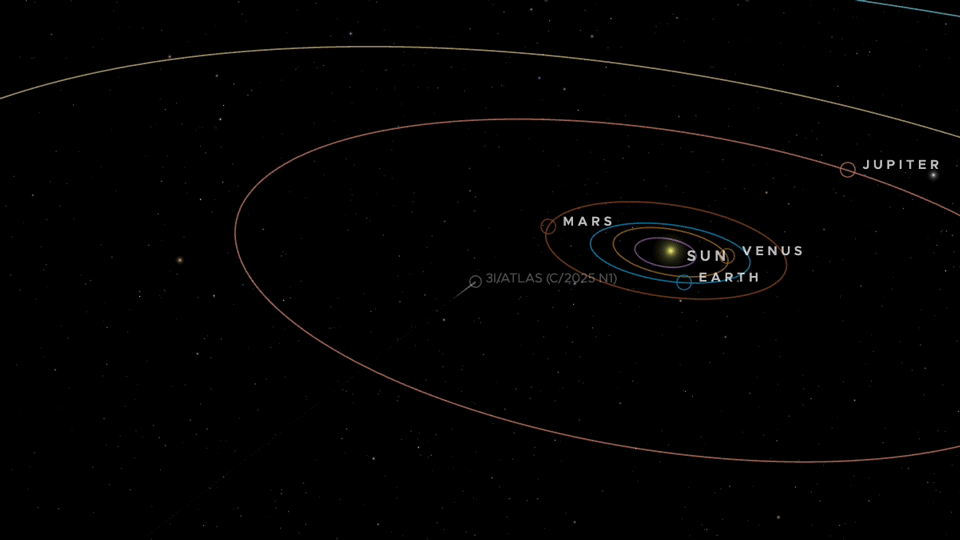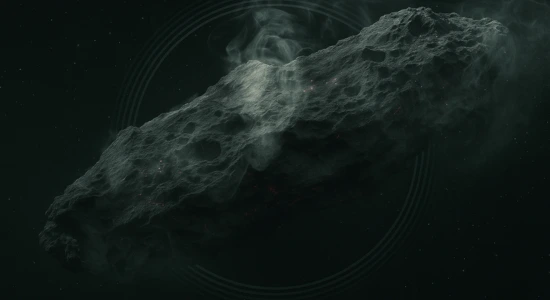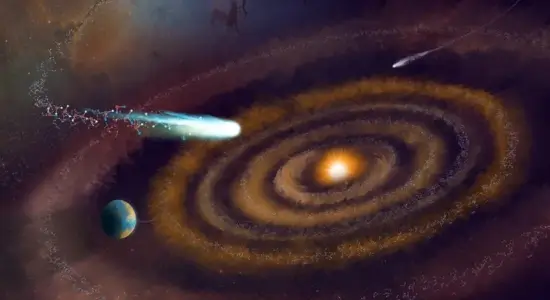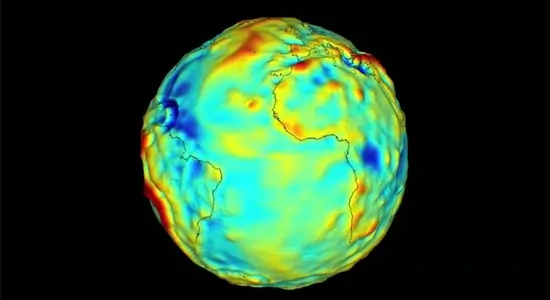3I/ATLAS, Interstellar Comet, Alien Spacecraft
A mysterious visitor is streaking through our Solar System, travelling at a blinding speed of over 60 kilometers per second. It’s the third interstellar object ever detected, and its arrival has immediately split the scientific community and the internet into two camps: Is it a relic of a distant star system, or is it an alien probe sent by a civilization from the Milky Way’s dark fringes?
This is the story of 3I/ATLAS, a celestial body that is scientifically priceless, naturally bizarre, and the latest focus of the eternal debate about life beyond Earth.
 cr : science.nasa.gov
cr : science.nasa.gov
🚀 The Facts: What We Know About This Interstellar Wanderer
3I/ATLAS was first spotted in July 2025 by the Asteroid Terrestrial-impact Last Alert System (ATLAS) survey in Chile. The “3I” in its name means it is the Third Interstellar object (following ‘Oumuamua and 2I/Borisov) confirmed to have originated from beyond our Solar System.
The Scientific Verdict: A Comet, But Not a Normal One
Astronomers have overwhelmingly classified 3I/ATLAS as a comet. The evidence is clear:
- Hyperbolic Trajectory: Its orbit is not a closed loop around the Sun (like Earth or native comets). Its extreme speed and path confirm it is simply passing through our neighbourhood before exiting permanently back into interstellar space.
- Coma and Tail: Observations from powerful telescopes like Gemini South and Hubble Space Telescope revealed a clear coma (a gaseous envelope) and a tail of gas and dust—the unmistakable hallmarks of a comet being warmed by the Sun.
- Chemical Signatures: Data from the James Webb Space Telescope (JWST) confirmed the presence of chemicals, including carbon dioxide (CO₂) and water ice.
However, 3I/ATLAS is far from ordinary. It is breaking the rules of Solar System comets:
The Bizarre Composition: Spectroscopic studies found that 3I/ATLAS has an extremely high carbon dioxide to water ice ratio (8:1)—one of the highest ever recorded. This suggests it formed in an environment chemically distinct from the one that birthed our own Solar System.
The Origin: Analysis of its trajectory suggests it likely hails from the Milky Way’s Thick Disk, a region populated by ancient stars. Some scientists suggest it could be older than the Solar System itself.
👽 The Speculation: Is It a Probe in Disguise?
Every time an unusual interstellar object visits, speculation about alien technology (or technosignatures) inevitably arises. For 3I/ATLAS, much of this debate has been driven by Harvard Professor Avi Loeb, a well-known proponent of the search for extraterrestrial technology.

Professor Loeb pointed to several anomalies that he suggests could be interpreted as non-natural:
-
- Non-Gravitational Acceleration: Loeb suggested that the comet showed slight non-gravitational acceleration—meaning it moved in a way that couldn’t be explained by just the Sun’s gravity. While comets naturally accelerate from outgassing (jet streams of sublimating ice), Loeb suggested this could hint at an internal engine. (Other astronomers contest that the acceleration is entirely within the bounds of normal cometary activity.)
- The Anti-Tail: Early observations showed a plume of material seemingly pointing sunward (towards the Sun) rather than away from it, which is the typical direction for a comet tail. Loeb speculated this could be a controlled braking thrust. (Other scientists clarified that this is a rare but natural optical effect caused by Earth’s viewing angle relative to the comet’s orbit.)
- Unusual Chemistry: The detection of materials like Nickel, without the expected ratio of Iron, prompted some speculation that the unique mix might hint at an artificial fragment.
Despite the intriguing nature of these claims, the overwhelming scientific consensus is clear: 3I/ATLAS is a natural comet.
Fact Check: According to Tom Statler, NASA’s small-bodies lead scientist, “It looks like a comet. It does comet things. It very, very strongly resembles, in just about every way, the comets that we know.” There is no direct, verifiable evidence—such as radio signals or observed manoeuvres—that suggests it is an alien craft.
🔭 The Final Window: An Opportunity for Science
The debate between the natural comet and the alien probe is what makes 3I/ATLAS so fascinating. Regardless of its origin, this object provides an invaluable “cosmic messenger.”
Because it formed in another star system, its chemistry—particularly its bizarre CO₂ ratio—allows astronomers to peek directly into the chemical conditions of other planetary nurseries across the galaxy. This is a rare, fleeting chance to compare the building blocks of planets beyond our own Solar System without having to send a costly probe.
3I/ATLAS has already passed its closest approach to the Sun (perihelion) and is now heading back out into the galaxy, carrying its secrets with it. It reminds us that whether visitors are natural or artificial, the universe always has something new to teach us.
ref : solar-system , NASA






